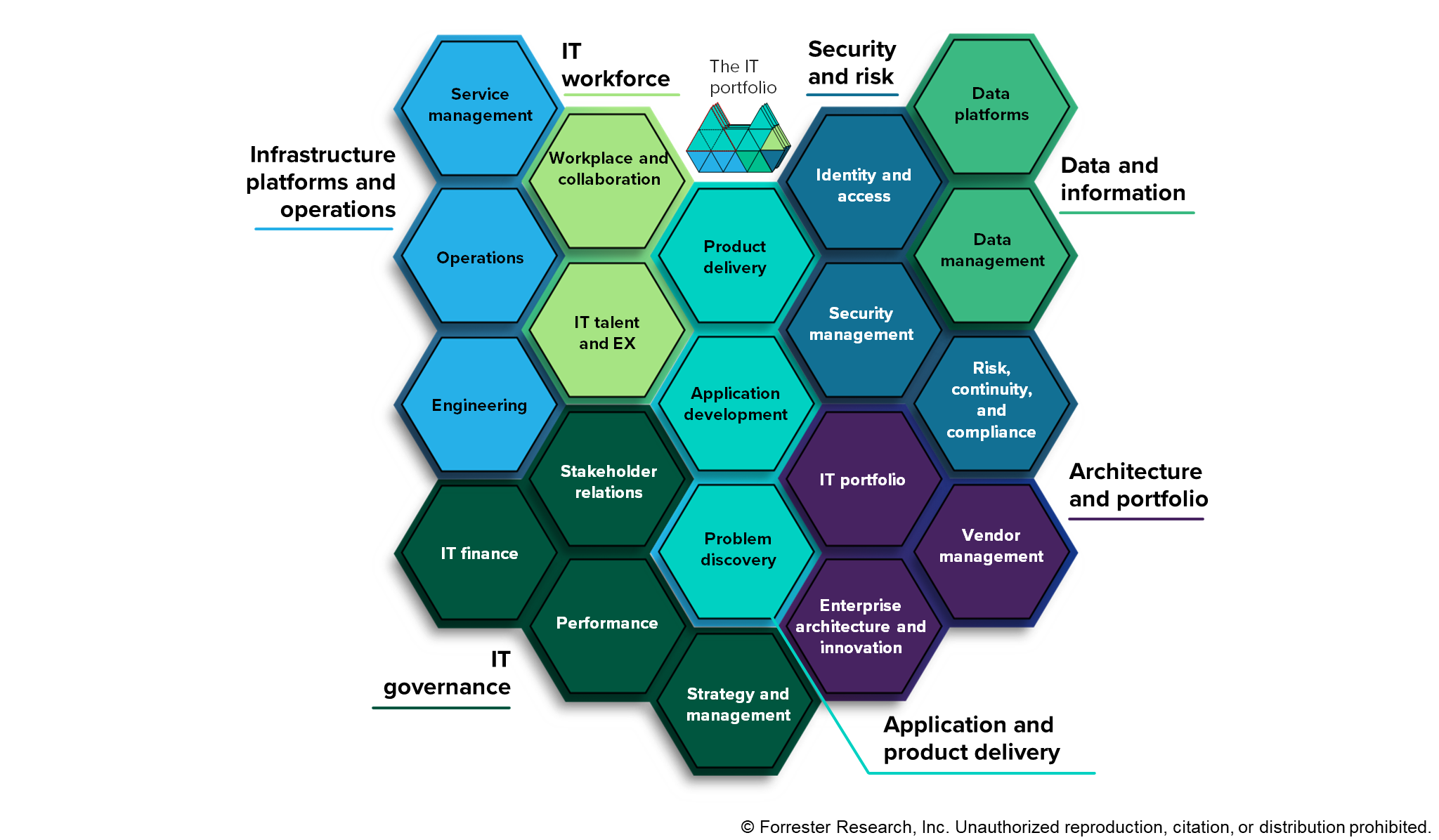Introducing The Forrester Reference IT Capability Map
Today, I am happy to announce the publication of the Forrester Reference IT Capability Map. This is a comprehensive statement of the major capabilities used to define and deliver IT and digital systems, both individually and at a portfolio level.
From the report summary: Large digital and IT organizations represent complex ecosystems of processes, people, and platforms. They acquire technology and implement partnerships, composing and configuring solutions into valuable customer and end-user experiences, and support these experiences as applications, products, and services for years or decades. The IT capabilities for this delivery must be adaptive, as technology continues to evolve. Use this technology-, industry-, and maturity-agnostic IT capability map to assess your digital and IT organization and any significant deficits, gaps, or redundancies in your abilities to deliver value for your stakeholders.
Why a framework, and why now?
When companies reach a certain size, and their IT systems have grown accordingly, they tend to reach a watershed moment when they realize that they can no longer manage their IT estate with emails and spreadsheets and Post-it notes. At the larger scale, they may assign an enterprise architect to try to make sense of the space; I held that role for a large bank, wrote a book about the topic, and ultimately found myself helping to start up the IT4IT standard that is now a product of The Open Group (a more systems-level view of the topic that does not currently include a capability model, per se).
At Forrester, we frequently entertain client inquiries on this topic as well, and I have continued to evolve my thinking on this topic through covering enterprise service management, DevOps, product-centric transformation, and enterprise architecture over the past seven years. Clearly, the overall space has evolved as IT operating models have changed, and I felt that an updated view was called for.
So without further ado, here it is. This is the “Level 2” version, with 20 capabilities grouped into seven major areas. We go to a Level 3, with about 75 subcapabilities (3–5 for each Level 2).
(Click for a larger view)
Inputs into the diagram include major IT frameworks and the work of various authors. At one point, we had a spreadsheet with hundreds of entries, which we then boiled down through multiple iterations and conversations about what’s important and what is changing. As noted in the report, “These capabilities evolve slowly over time as IT management approaches change and transcend the churn of the year-to-year technology market and application and service lifecycles.” Yet they do change. Products and platforms have entered industry thinking broadly and now need to be recognized.
This represents a kickoff of a major research stream for me on IT management architectures, which my long-term followers and associates will recognize as an interest of mine for about 20 years now. There are three primary taxonomies: capabilities (this work), an ontology, and a reference systems architecture we are tentatively calling the IT control plane. The latter is where we will link in actual markets for this space, including evaluative research such as our Forrester Wave™ work on topics like enterprise service management, strategic portfolio management, enterprise architecture, DevOps, and observability. Finally, all of this work will inform analyses of topics such as vendor M&A, market convergences, the impact of generative AI, and broader topics like technical debt and the rise of increasingly broad IT management platforms.
I could not have done this report without extensive collaboration, so big shout out to: Frederic Giron, Bobby Cameron, Sam Higgins, Joseph Blankenship, Andrew Hewitt, Aaron Katz, Margo Visitacion, Julie Mohr, Fiona Mark, David Mooter, Stephanie Balaouras, Carlos Casanova, Brent Ellis, Matthew Guarini, Melissa Chhay, and Kara Hartig
There will be much more to come on this topic. Please drop me a line if you are interested!
Forrester clients only: I will be presenting a webinar on June 4 at 1 p.m. ET/10 a.m. PT.

